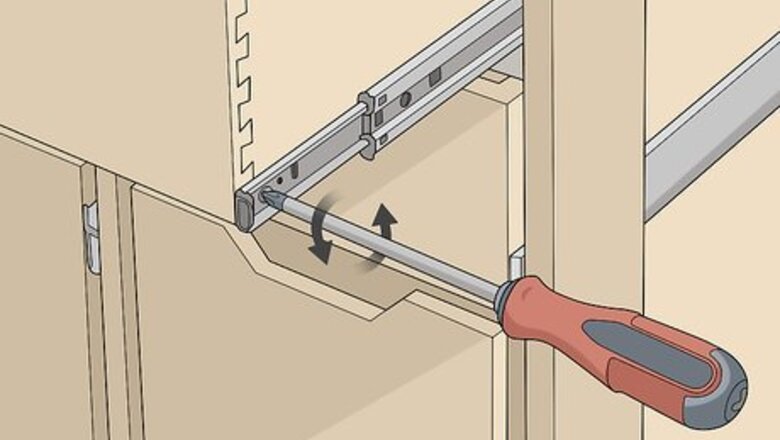
views
Determining Your Drawer Length
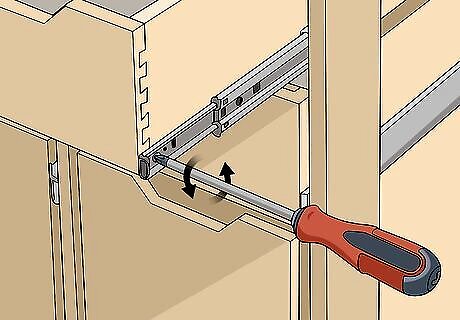
Unscrew the current slide hardware to remove the drawer. Pull out your drawer to locate the current slide hardware. Using a Philip’s screwdriver, remove the screws attaching the slide to the drawer. Depending on the hardware, you might find the slides on the sides or bottom of your drawer. Most slides have a screw on each end to secure the device into place. Certain slides might have screws in the center of the hardware, as well. It’s easiest to do measurements by removing the bottommost drawer.
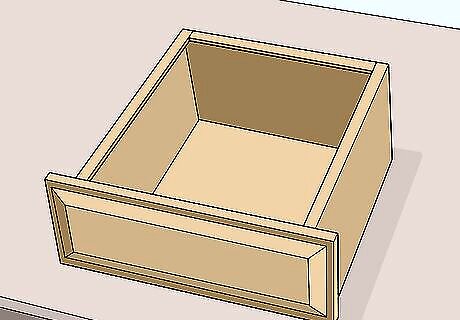
Remove the drawer from the cabinet and place it on a flat surface. Pull out the drawer completely so that it’s separated from the main cabinet or furniture source. To make your measurements simpler, turn the drawer upside down, so the bottom is facing up.

Measure the length of the cabinet to have a sense of the furniture dimensions. Use a tape measure to calculate the distance between the front edge of the open cabinet to the back wall. Once you’ve figured out the exact measurement, subtract 1 inch (2.5 cm) from the total to determine your slide length. If Jot down the measurement on a separate piece of paper so you don’t forget it.

Calculate the drawer’s length to complete your measurements. Examine the bottom of the drawer that you just removed. Extend the tape measure from the front edge of the drawer to the back edge. Take note of this measurement, as under-mounted slides need to be the exact same length as the drawer. Under-mounted slides are attached in pairs beneath of the drawer.

Choose a slide that best fits your furniture’s schematics. Examine the measurement of both your drawer and cabinet to determine the length that your slide will need to be. Traditional drawer slides range in length between 10 to 28 inches (25 to 71 cm), so use those measurements to select the best slide style. For instance, if you’re planning on getting an extensive slide, you might want to invest in 28 inches (71 cm) slides. If you’d prefer to have a less-extended drawer, look into drawer slides that are closer to 10 inches (25 cm) in length.
Choosing the Right Slide
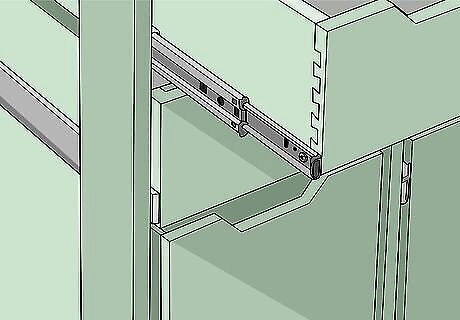
Pick a side-mount drawer slide if there’s a gap between your drawer and cabinet. Pull one of your drawers outwards so it’s separated from the main piece of furniture. Using a ruler or tape measure, calculate the amount of space between the outer edge of the drawer and the inner edge of the cabinet. If there’s not a lot of space between these 2 areas, you might not be able to use a side-mounting drawer slide.
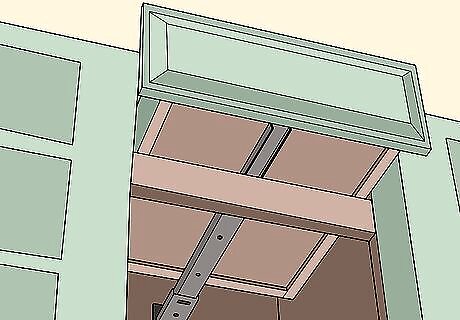
Opt for a center-mount option if you don’t want your slide to be visible. Think about how you’d like your drawers to look after the slides are installed. Is visual design an important factor for you, or are you more concerned with functionality? If you’d prefer for the sides of your drawers to be bare, go for a center or under-mounted slide instead. These types of slides are secured beneath the drawer. They’re a great option if you don’t want the hardware to be visible to the naked eye!
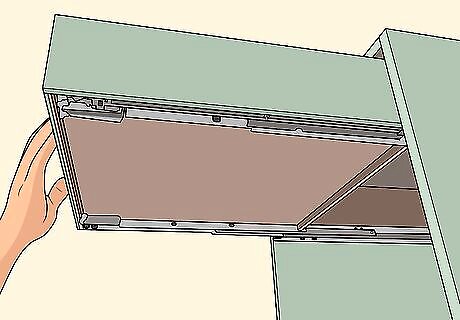
Select under-mounted slide hardware if there’s not much space between your cabinet and drawer. Check the distance between the outside of the drawer and the inside of the cabinet wall. If your furniture is a bit more narrow, you might not have enough room for a side-mounted drawer slide. Next, see if there’s at least 0.5 inches (1.3 cm) of space between the bottom of the drawer and the bottom opening of the cabinet. These slides are great for drawers that only have 0.19 to 0.25 inches (0.48 to 0.64 cm) of space between the drawer’s edge and the inside wall of the cabinet.

Decide how far you’d like your drawer to extend. Do you want your drawer to fully come out of the furniture, or would you prefer a more limited slide extension? If you’d like to completely remove your drawer, invest in an overtravel style slide. If you’d prefer for the door to stay rigid, consider getting a ¾-extension slide instead. Full-extension and ⅞-extension drawer slides are a happy medium for people who don’t like either extreme.




















Comments
0 comment